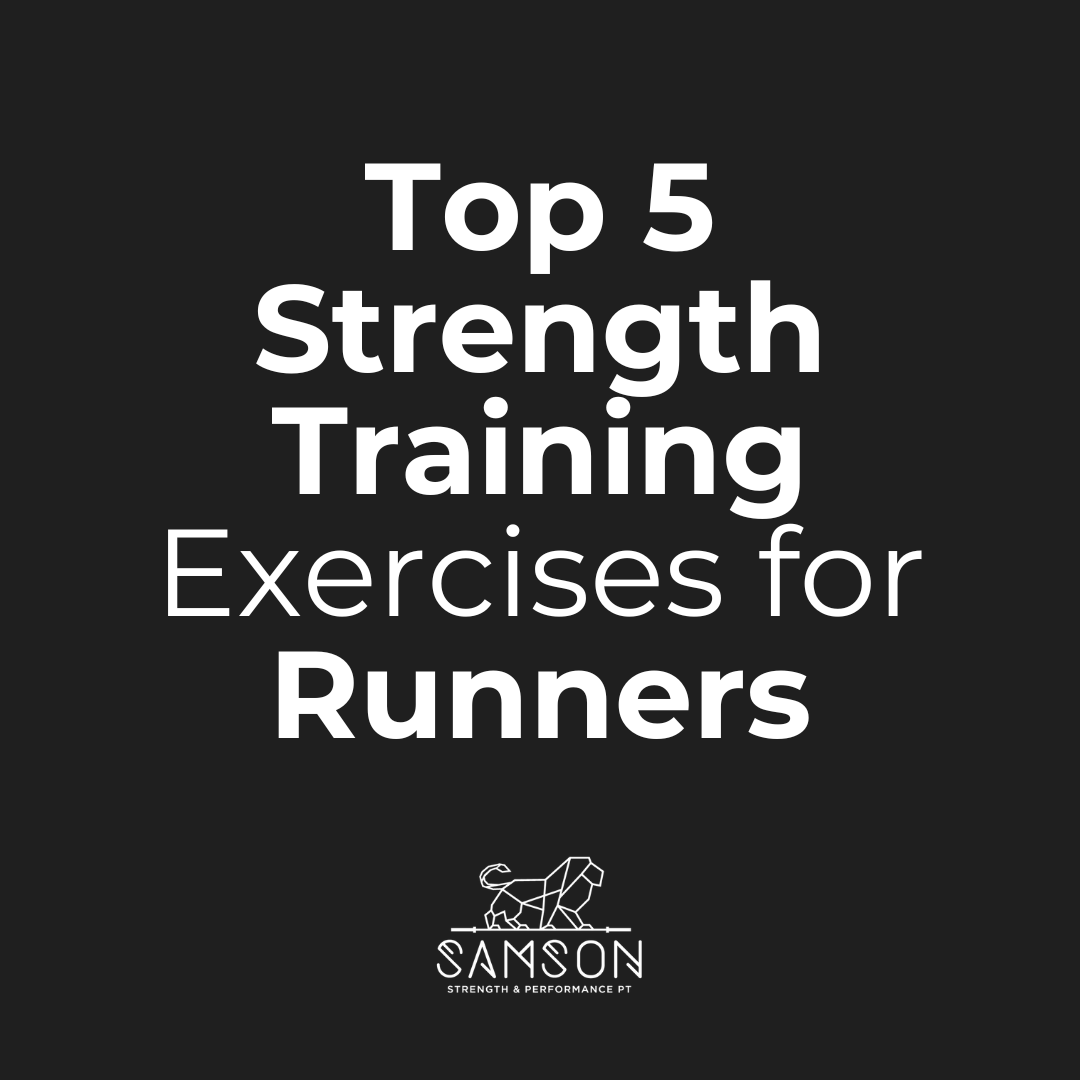Top 5 Strength Training Exercises for Runners
Top 5 Strength Training Exercises for Runners
Strength training can be a game-changer when it comes to injury prevention, running performance, muscular endurance, speed, and power.
By just incorporating two to three days of strength training, you can drastically improve your running efficiency and mechanics!
Here are the top 5 strength training exercises for runners that are a MUST if you want to get faster:
Single Leg Deficit Soleus Raises
Bulgarian Heel Raise Holds
Single Leg Romanian Deadlifts
Standing Hip flexor march with a Kettlebell
Hinged Clamshell with a Kettlebell
1. Single Leg Deficit Soleus Raises
Number on on our list of top 5 strength training exercises for runners is the single leg deficit soleus raise. The soleus is a muscle that is deep to the calves and inserts into your achilles complex. This is one of the most neglected muscles in runners due to the fact that it is activated most in a knee bent position.
Although standard calf raises still train the achilles complex, the knee bent calf raise slackens the gastroc heads which tend to take over in a standard heel raise. The soleus muscle is responsible for power during the toe off phase of running, helping to propel you forward and, in some cases, the soleus is responsible for absorbing shock during your initial contact with the ground.
You will notice in this video that these are performed in a deficit position so that you can train this muscle through its entire range of motion.
2. Bulgarian Heel Raise Holds
This advanced exercise not only helps to strengthen your achilles complex with the heel raise hold, but helps to strengthen your quads, glutes, and hamstrings.
By maintaining the heel raise throughout the entire exercise, you are working on the muscular endurance of your calves which is vital for distance runners. Your quadriceps are a muscle on the front of the leg that is responsible for bending the hip and extending the knee.
This is a vital movement for ascending hills and generating force effectively during your stride. Not to mention, this movement assists with lower leg stability in hips, knees, and ankles!
3. Single Leg Romanian Deadlift with Rotation
The single leg RDL can be challenging for some individuals that lack single leg balance.
Balance is a combination of strength and stability which is an important component of running.
This exercise primarily targets the hamstrings and glutes which are imperative for increasing speed and force production during your runs. The hamstring propels you forward and decelerates the leg during the swing phase of your run.
With the added rotation, this exercise also works on glute med, which is an added bonusfor hip stability in runners.
Give this posterior chain exercise a try on your next strength training day.
4. Standing Hip flexor march with a Kettlebell
This is a MUST do for runners! A strong hip flexor provides individuals with a proper knee drive reducing the amount of outward swinging of the leg while running.
Hip flexor strains and hip flexor tendinopathies can be a common injury for many runners.
As you begin to ramp up your training volume, whether that entails increasing speed, progressing distance, or just adding in a hill, it is important to make sure you are also increasing the capacity of your hip flexors.
Irritation in the hip flexor muscle can display as lower back pain following a run, front of hip pain after a run, or just extreme fatigue. Don’t let your hip flexors hold you back.
5. Hinged Clamshell with a Kettlebell
The final exercise on our top 5 strength training exercises for runners is the hinged clamshell with a kettlebell. Lack of lateral glute strength can be a cause of common injuries in runners including, but limited to, knee pain, IT band syndrome, and gluteal tendinopathy.
Your lateral glutes are a big part of maintaining pelvic stability during your runs. Inefficient pelvic stability can lead to narrowing of your stride, knocking of your knees, lower leg pain and much more.
Start with unweighted hinged clamshells and as your strength improves, work towards increasing the kettlebell weight.
Incorporating these top 5 strength training exercises for runners into your weekly training can help you build strength, improve endurance, and reduce injury risk, but if you're struggling with pain, imbalances, or recurring injuries, you might need a more personalized approach. Consider seeing a performance physical therapist that can analyze your running and give you actionable steps to make your runs more efficient to decrease risk of injury. The right physical therapist can even help you to increase speed and strength to PR your next race!
Running analysis for injured runners in Jacksonville Beach, FL:
We understand that running is a part of your identity. That's why we're so committed to providing performance physical therapy services that will help you to actually return to your sport, rather than telling you to just stop running.
If you're located in the Jacksonville Beach, FL area and are looking to get treatment for any injuries that you are facing, reach out to us. We offer an in depth evaluation and a running analysis to check to see if you have any weaknesses or imbalances in your running. You can read more about our running analysis services here or schedule a free call by clicking here.
Next on your reading list:

